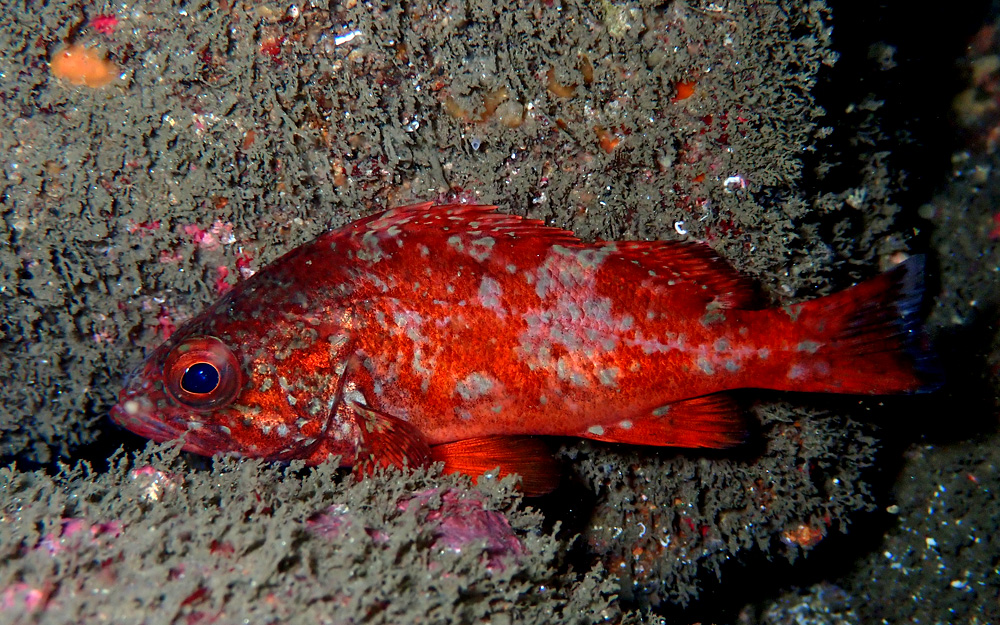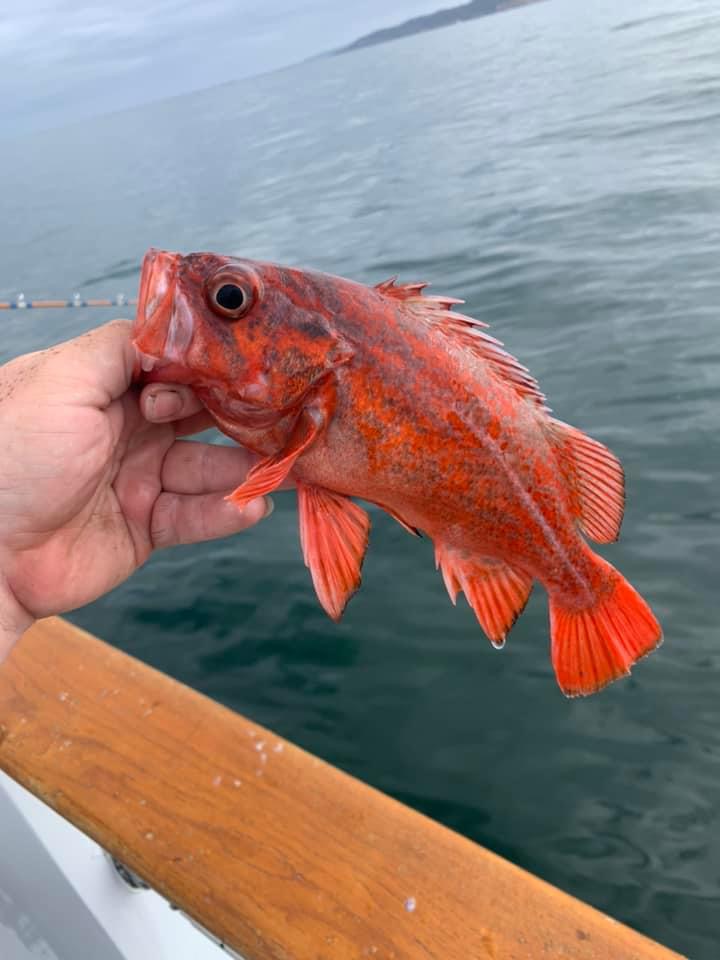Vermilion rockfish
(Sebastes miniatus)

Classification
General data
Sebastes miniatus, the vermilion rockfish, vermilion seaperch, red snapper, red rock cod, and rasher,[2] is a species of marine ray-finned fish belonging to the subfamily Sebastinae, the rockfishes, part of the family Scorpaenidae. It is native to the waters of the Pacific Ocean off western North America from Baja California to Alaska.
Description
Sebastes miniatus has a rather stocky body shape with the depth of the body being equivalent to just under two fifths of its standard length. It has moderately robust to weak spines on its head, the nasal, preocular, supraocular, postocular, tympanic and parietal spines being always present, the nuchal spine usually being absent and the coronal spine never being present.
The dorsal fin is continuous with a deep notch separating the spiny and soft rayed parts with the spiny part has a longer base than the soft rayed part with deep incisions on the membranes between the spines. There are 13 spines and 13 to 15 soft rays in the dorsal fin while the anal fin has 3 spines and 7 soft rays.
The lower jaw is rough with large scales. It has deep caudal peduncle and the caudal fin has a slight fork.
This species attains a maximum total length of 91 cm and a maximum published weight of 6.8 kg (15 lb).
The color of this species varies from dark red to vermilion with gray or black spotting on the back and flanks. Smaller fishes may have a more mottled pattern than larger fishes. The mouth is red mouth and the red fins are frequently have black margins, again more typical in smaller fishes. Larger individuals show indistinct dark markings on the head and back. There are three indistinct yellow or orange stripes radiating from the eyes. The posterior two thirds of the lateral line has a silvery color.
Distribution and habitat
Sebastes miniatus occurs in the eastern Pacific from San Quintin, Baja California in Mexico north to to Prince William Sound in Alaska. It is found in and around rocky reefs at depth from 6 to 250 m (20 to 820 ft).
Biology
Sebastes miniatus may be found in aggregations, in small schools or pairs or even as solitary fish.It is thought that this species can be nomadic and move between reefs. The spines of the dorsal and anal fins have glands in them that can produce a mild venom which may cause painful wounds if they break the skin.
The vermilion rockfish is, like other rockfishes, ovoviviparous, the females give birth to live young and are sexuall mature from 4-7 years of age and a length of about 35 cm (14 in). The females extrude the larvae from September to December. The largest females may hold up to 1,600,000 eggs, which hatch internally and the larvae are extruded. The larvae are translucent at first, spending several months offshore among the plankton feeding on zooplankton and gaining color. From the start of February they move inshore and settle. The adults feed almost exclusively on fishes, squid, octopuses and krill.












